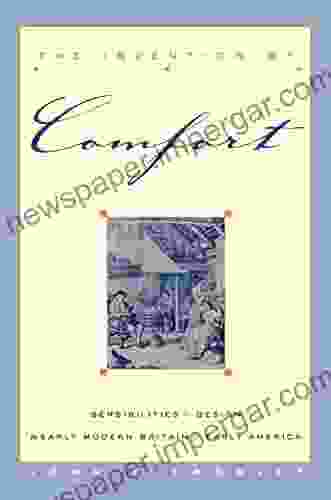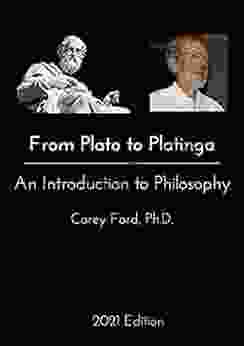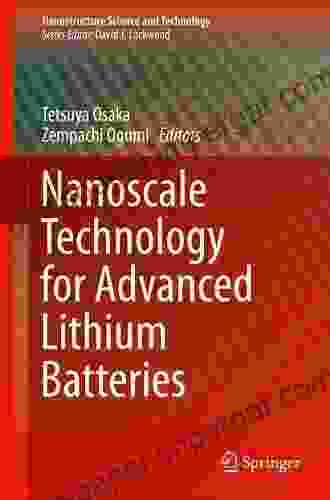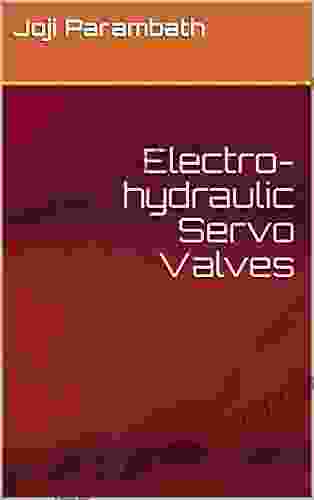Harnessing the Power of Nanoscale Technology for Advanced Lithium Batteries: A Comprehensive Guide to Nanostructure Science

Lithium batteries have revolutionized the world of electronics, powering everything from smartphones to electric vehicles. However, conventional lithium-ion batteries face limitations in terms of energy density, lifespan, and safety. Nanoscale technology offers a promising solution, enabling the development of advanced lithium batteries with enhanced performance.
Nanoscale Technology: The Key to Breakthroughs
Nanoscale technology involves manipulating materials at the atomic and molecular level, unlocking unique properties that cannot be achieved using traditional manufacturing methods. In the context of lithium batteries, nanoscale technology allows for the creation of novel nanostructures with tailored electrochemical properties.
4.1 out of 5
| Language | : | English |
| File size | : | 11746 KB |
| Text-to-Speech | : | Enabled |
| Screen Reader | : | Supported |
| Enhanced typesetting | : | Enabled |
| Print length | : | 286 pages |
Nanostructures: The Building Blocks of Advanced Batteries
Nanostructures come in various forms, including nanoparticles, nanowires, and thin films. These structures exhibit exceptional electrical conductivity, mechanical strength, and electrochemical stability. By incorporating nanostructures into lithium batteries, researchers can enhance battery capacity, rate capability, and lifespan.
Understanding Nanostructure Science
Nanostructure science is the study of the properties and behavior of nanostructures. This interdisciplinary field draws upon principles from physics, chemistry, materials science, and engineering. Understanding nanostructure science is crucial for designing and optimizing advanced lithium batteries.
The Role of Nanostructure Science in Lithium Battery Development
Nanostructure science plays a vital role in the development of advanced lithium batteries by:
* Enabling the synthesis of novel nanostructures with desired electrochemical properties. * Understanding the mechanisms underlying nanostructure-based energy storage. * Optimizing the design and fabrication of lithium batteries for specific applications.
Applications of Nanoscale Technology in Lithium Batteries
Nanoscale technology finds numerous applications in lithium batteries, including:
* Anode materials: Nanoscale silicon, carbon, and metal oxides enhance anode capacity and rate performance. * Cathode materials: Nanostructured lithium metal oxides and phosphates improve cathode stability and energy density. * Electrolytes: Nanocomposite electrolytes enhance ionic conductivity and prevent thermal runaway. * Separators: Nanoscale polymer membranes provide superior safety and prevent short circuits.
Case Studies: The Power of Nanoscale Technology in Action
Numerous case studies demonstrate the transformative potential of nanoscale technology in lithium batteries:
* Researchers at the University of California, Berkeley developed nanoscale silicon anodes that increased battery capacity by 40%. * Scientists at Stanford University created nanostructured lithium-sulfur cathodes that extended battery lifespan by 300%. * A research team at the Massachusetts Institute of Technology designed a nanoscale polymer electrolyte that significantly improved battery safety.
Nanoscale technology holds the key to unlocking the full potential of lithium batteries. By manipulating materials at the atomic and molecular level, scientists can create novel nanostructures that enhance battery performance. Nanostructure science provides the foundation for optimizing lithium batteries and driving the next generation of energy storage solutions.
Call to Action
Discover the transformative power of nanoscale technology for advanced lithium batteries. Free Download your copy of "Nanoscale Technology for Advanced Lithium Batteries: Nanostructure Science and Applications" today and embark on the journey towards unlocking the future of energy storage.
4.1 out of 5
| Language | : | English |
| File size | : | 11746 KB |
| Text-to-Speech | : | Enabled |
| Screen Reader | : | Supported |
| Enhanced typesetting | : | Enabled |
| Print length | : | 286 pages |
Do you want to contribute by writing guest posts on this blog?
Please contact us and send us a resume of previous articles that you have written.
 Book
Book Novel
Novel Page
Page Chapter
Chapter Text
Text Story
Story Genre
Genre Reader
Reader Library
Library Paperback
Paperback E-book
E-book Magazine
Magazine Newspaper
Newspaper Paragraph
Paragraph Sentence
Sentence Bookmark
Bookmark Shelf
Shelf Glossary
Glossary Bibliography
Bibliography Foreword
Foreword Preface
Preface Synopsis
Synopsis Annotation
Annotation Footnote
Footnote Manuscript
Manuscript Scroll
Scroll Codex
Codex Tome
Tome Bestseller
Bestseller Classics
Classics Library card
Library card Narrative
Narrative Biography
Biography Autobiography
Autobiography Memoir
Memoir Reference
Reference Encyclopedia
Encyclopedia John P Cann
John P Cann Joseph Pietrykowski
Joseph Pietrykowski John Lambshead
John Lambshead John F Hogan
John F Hogan John Leach
John Leach Joseph S Renzulli
Joseph S Renzulli Joseph J Mistovich
Joseph J Mistovich John O Campbell
John O Campbell Joseph Datsko
Joseph Datsko John Corbett
John Corbett John Francis Ficara
John Francis Ficara John Reardon
John Reardon John D Lantos
John D Lantos John Oates
John Oates Johnoy Davis
Johnoy Davis Jon Gordon
Jon Gordon Jonathan Wolff
Jonathan Wolff John Shaw
John Shaw John Muir
John Muir John J Shea
John J Shea
Light bulbAdvertise smarter! Our strategic ad space ensures maximum exposure. Reserve your spot today!

 William FaulknerWorking Alone For Pros By Pros: The Ultimate Guide to Independent Success
William FaulknerWorking Alone For Pros By Pros: The Ultimate Guide to Independent Success
 Braeden HayesSensibilities and Design in Early Modern Britain and Early America: A Sensory...
Braeden HayesSensibilities and Design in Early Modern Britain and Early America: A Sensory... Gil TurnerFollow ·18.6k
Gil TurnerFollow ·18.6k Charlie ScottFollow ·17.9k
Charlie ScottFollow ·17.9k John GreenFollow ·8.1k
John GreenFollow ·8.1k Mark TwainFollow ·13.4k
Mark TwainFollow ·13.4k Francis TurnerFollow ·18.8k
Francis TurnerFollow ·18.8k Ernest ClineFollow ·2.1k
Ernest ClineFollow ·2.1k Kendall WardFollow ·18.8k
Kendall WardFollow ·18.8k Allen GinsbergFollow ·19.3k
Allen GinsbergFollow ·19.3k

 Jake Powell
Jake PowellThe Constitution of the State of Colorado: A Legacy of...
Since its adoption in 1876, the...

 Devin Ross
Devin RossFrom Plato to Plantinga: A Journey Through the History of...
Philosophy is the study of...

 Robin Powell
Robin PowellWords That Hurt, Words That Heal: The Power of Language...
Words are powerful. They can...

 T.S. Eliot
T.S. EliotTantalize Your Taste Buds with Over 90 Low-Carb Ethnic...
Indulge in a Culinary Adventure with "Over...
4.1 out of 5
| Language | : | English |
| File size | : | 11746 KB |
| Text-to-Speech | : | Enabled |
| Screen Reader | : | Supported |
| Enhanced typesetting | : | Enabled |
| Print length | : | 286 pages |












